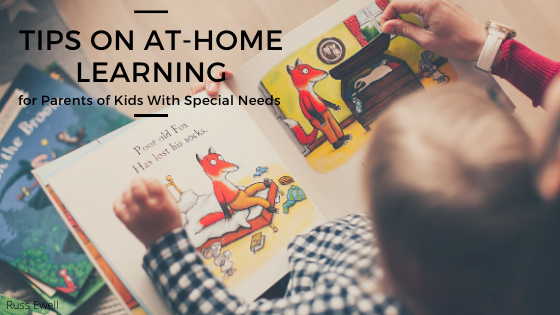Millions of students and parents are now faced with the task of home-schooling. Schools around the country have closed to help prevent the spread of the coronavirus. While many students will continue doing their normal schoolwork, some will face bigger challenges.
Children with special needs are going to face more challenges than most. Their needs are varied, from being visually impaired to being on the autism spectrum disorder. Most of these students have a very specific education plan in place, called individual education plans (IEP), to help them learn and keep up with their peers. Even with at-home learning in place, schools are still legally required to continue providing special needs children with the services they require. Just keep in mind that how these services are implemented will change.
- Keep a consistent schedule. Many special needs children have difficulties with change. They like consistency and thrive with a solid routine. Parents should set an at-home schooling schedule and stick with it. This can be anything from a simple start and stop time for schoolwork to having a detailed schedule that gives each subject and activity their own timeframes.
- Communicate with child’s school specialists. While classroom teachers are always the first contact for parents, special education teachers, therapists, and other school professionals should be consulted about helping a special needs student. This team of specialists can put together a plan to keep the child’s education ongoing.
- Become familiar with online learning platforms. These platforms include services like Google Classroom and Class Dojo. Become familiar with whatever platform the school will be using. These platforms will allow students to send/receive assignments and reading material, communicate with teachers, and get instructions for projects. The more help a parent can give a special needs student, the better.
- What is the student’s learning style? Special needs students have varied learning styles. Some have no problems using digital platforms for school, while others need classroom material printed out. Parents should ask the child’s special education team how the child learns best. They’ll be able to give specific recommendations and help the parent tailor at-home schooling to the student’s preferences.
- Be flexible and patient. At-home schooling is new for both parents and teachers. Parents must be patient and know there will be some trial-and-error. Be prepared for teachers to change their methods if something isn’t working. Teachers and specialists are working hard to continue giving each student a quality education.
Parents with special needs children will face an uphill battle for the rest of the 2020 school year. But as time goes on and students fall into a routine, the challenge and pressure will ease. The key for parents is to take it one day at a time, even one hour at a time, if necessary.

